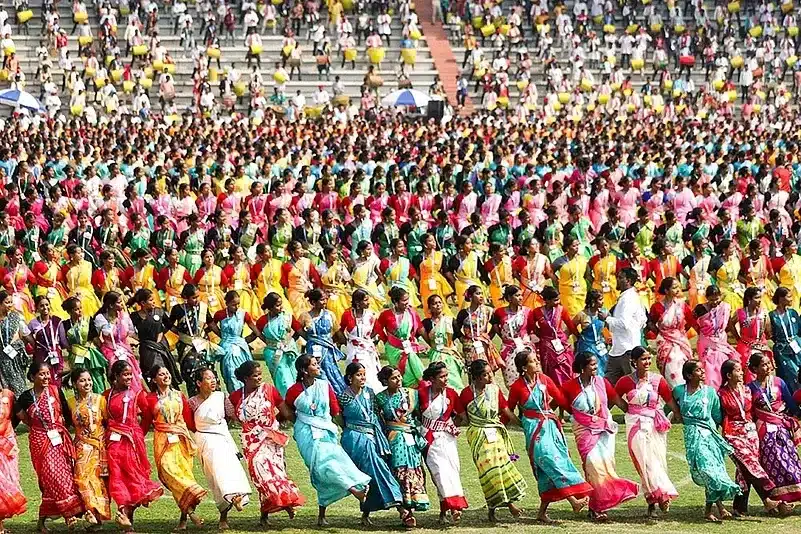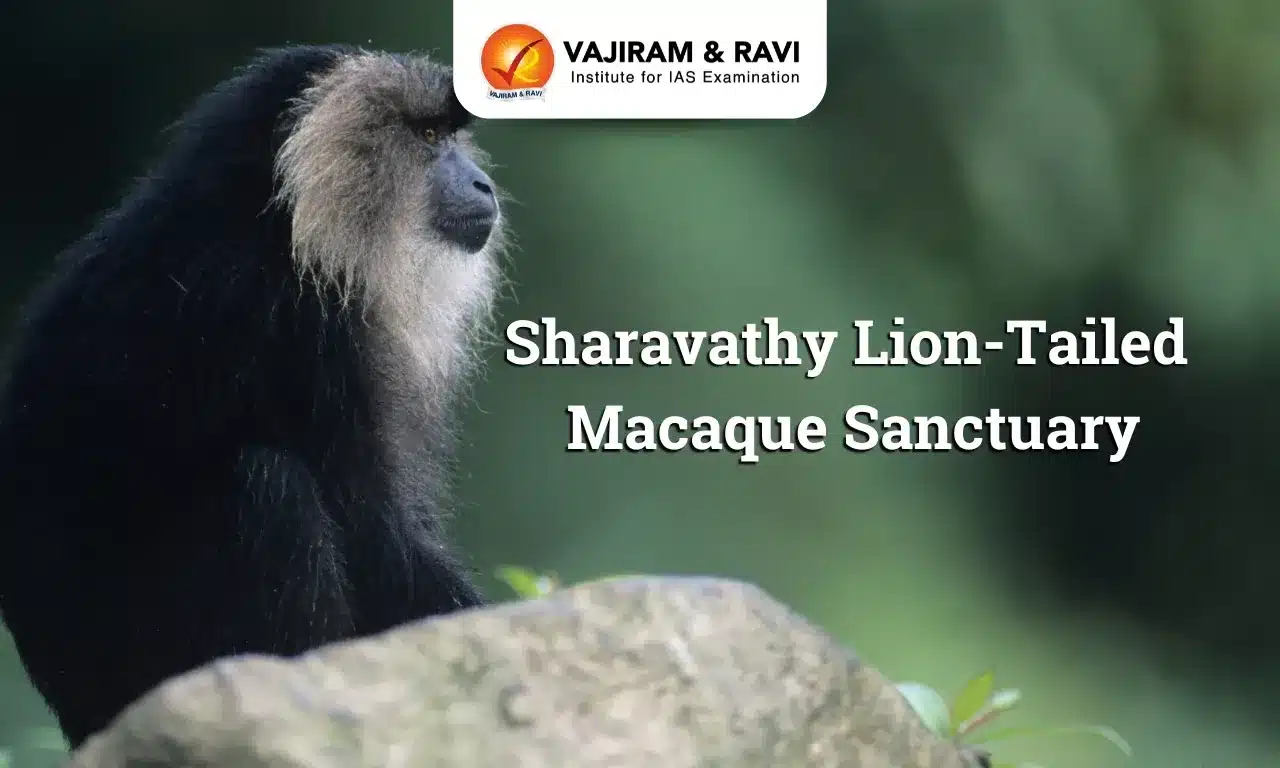Jhumoir Binandini Dance Latest News
The Prime Minister of India will attend the Jhumoir Binandini (Mega Jhumoir) 2025, a spectacular cultural extravaganza with 8,000 performers participating in the Jhumoir dance.
About Jhumoir Binandini Dance
- It is also known as Jhumur, is a traditional folk dance performed by the Adivasi tea tribes of Assam during the harvest season.
- It is accompanied by traditional instruments like the Madal, Dhol, Taal and Flute.
- The dance is performed to celebrate various occasions, including harvest festivals, weddings, and community gatherings.
Performance and Attire of Jhumoir Binandini Dance
- It is performed by both men and women, who dance in a circular formation, holding each other’s waists.
- The dance is characterized by rhythmic footwork, swaying movements, and lively music.
- The traditional attire for Jhumur dance includes colorful sarees for women and dhotis and kurtas for men.
Significance of Jhumoir Binandini Dance
- It embodies the spirit of inclusivity, unity and cultural pride, and symbolises Assam’s syncretic cultural mélange.
- It serves as a means of social bonding and cultural expression.
Jhumoir Binandini Dance FAQs
Q1: What is Taal?
Ans: It is the term used in Indian classical music to refer to any rhythmic beat or strike that measures musical time. It is typically established by hand clapping (tali) , waving (khali).
Q2: Who are called tribes?
Ans: Tribes are groups of people who share a common culture, language, or history. They often have a common ancestor and live in their own closed society.
Source: PIB
Last updated on June, 2025
→ UPSC Notification 2025 was released on 22nd January 2025.
→ UPSC Prelims Result 2025 is out now for the CSE held on 25 May 2025.
→ UPSC Prelims Question Paper 2025 and Unofficial Prelims Answer Key 2025 are available now.
→ UPSC Calendar 2026 is released on 15th May, 2025.
→ The UPSC Vacancy 2025 were released 1129, out of which 979 were for UPSC CSE and remaining 150 are for UPSC IFoS.
→ UPSC Mains 2025 will be conducted on 22nd August 2025.
→ UPSC Prelims 2026 will be conducted on 24th May, 2026 & UPSC Mains 2026 will be conducted on 21st August 2026.
→ The UPSC Selection Process is of 3 stages-Prelims, Mains and Interview.
→ UPSC Result 2024 is released with latest UPSC Marksheet 2024. Check Now!
→ UPSC Toppers List 2024 is released now. Shakti Dubey is UPSC AIR 1 2024 Topper.
→ Also check Best IAS Coaching in Delhi
























